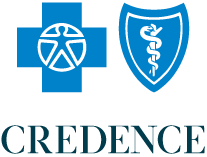You may have recognized these mysterious codes found on your claim statements in the past, or you might not have noticed them at all. Although ordinary in appearance, Current Procedural Terminology (CPT) codes play an essential and innovative role in improving modern medicine.
Over 50 years ago, the American Medical Association (AMA) invented CPT codes to construct a universal language for standardizing how healthcare describes medical procedures. Since then, the coding has grown into a broad system of terms and classifications to label surgery, medicine, diagnostic and therapeutic procedures and internal medicine specialties.
Today these codes—often called service codes—have three primary functions and are categorized by each.
Category I codes indicate what medical procedures or services were provided. These codes assist your provider in billing you or your health plan accurately for costs of care. They tell us exactly what symptoms a patient had and what care was provided during the visit.
Category II codes are referred to as performance measurement codes or tracking codes because they help collect large amounts of data related to the quality, efficiency and value of the care given. These code types in particular help hospitals and health plans operate more smoothly, find better solutions and improve care over time.
Category III codes are temporary codes that help us assess new services and procedures. Government agencies like the Food and Drug Administration (FDA) use these codes to test and support whether new types of treatment should become more frequently used, or remain a Category I code. Category III codes provide us with a more comprehensive understanding of how modern medicine is progressing and transforming every day.
Beyond category, each number or letter in a service code is attached to a defined meaning, which is then expressed on your claim statement for each service provided. Some common service codes you may see on your claim statement are:
99214 = an office visit
99397 = a preventive exam for those over 65
90658 = a flu shot 90716
90716 = a chickenpox vaccine
3006F = a chest X-ray
99281-85 = an ER visit
If you’d like to learn what a specific CPT code means in particular, you can conduct a search of each code on the American Medical Association website.
Sources:
https://www.ncbi.nlm.nih.gov/pmc/articles/PMC3865623/
https://www.ama-assn.org/amaone/cpt-current-procedural-terminology
https://www.ama-assn.org/practice-management/cpt/finding-coding-resources https://www.medicalbillingandcoding.org/intro-to-cpt/
